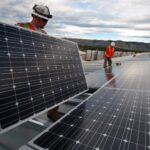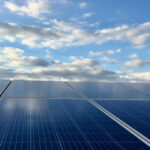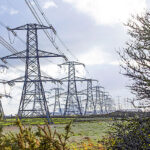Renewable energies
Home / Energy in Chile / Renewable energies
Renewable energies come from sources considered inexhaustible, and they’re defined because, in their transformation and use processes, they are not consumed on a human scale, either because of the immense amount of energy they contain or because they can regenerate themselves over time.
They are usually classified as conventional and non-conventional. Among the conventional ones, the most important to date is large-scale hydropower. On the other hand, at the national level, wind, small hydropower (plants up to 20 MW), biomass, biogas, geothermal, solar, and marine energy are defined as sources of Non-Conventional Renewable Energy (NCRE). It is not surprising that, given the remarkable penetration and establishment of these types of energy, they will become conventional at some point, as may be the case with solar energy, which has been widely developed in recent years.
In Chile, the energy consumed for heating and transportation comes from fossil fuels. If we want to meet our carbon neutrality goal by 2050, we need to transform all our energy consumption into electricity consumption derived from clean energies, which are also more economical today.
We’re at a crucial moment in history. We have to take advantage of the enormous energy potential that our geography grants us, especially the unparalleled solar radiation and the strength of our winds. Having these clean and inexhaustible sources represents a unique opportunity to break with decades-long environmental gaps and at the same time favor clean and less expensive energy consumption, as required by our population from north to south.
During 2022, the installed capacity of Renewable Energies has been increasing, as has the share of NCRE in power generation.
Source: Ministry of Energy
A mayo 2022 las ERNC fueron responsables del 29,5% de la generación de energía eléctrica
Installed capacity of non-conventional renewable energies.
As of May 2022, NCRE and Storage Systems capacity under construction reaches 4,835 MW.
Source: Statistics for the renewable electricity generation sector, ACERA, May 2022
The Kimal-Lo Aguirre transmission line has an enabling condition for the decarbonization process that Chile has committed to. It will not only allow greater transportation of the clean energy currently being generated in the north of Chile (and is presently being lost) but will also decongest the electricity system with a more sustainable future in sight.
The figure shows the electricity production of the National Electric System toward 2050, projected in the carbon neutrality analysis developed by the Ministry of Energy. It clearly shows that the Kimal-Lo Aguirre project will be key in reducing coal power generation, making it almost disappear.
Solar and Wind Energy Projects
Total net power as of July 2022
(228 projects)

(98 projects)

(250 projects)

(42 projects)

Source: National Electrical Coordinator July 2022/
Environmental Assessment Service 2016- July 2022.